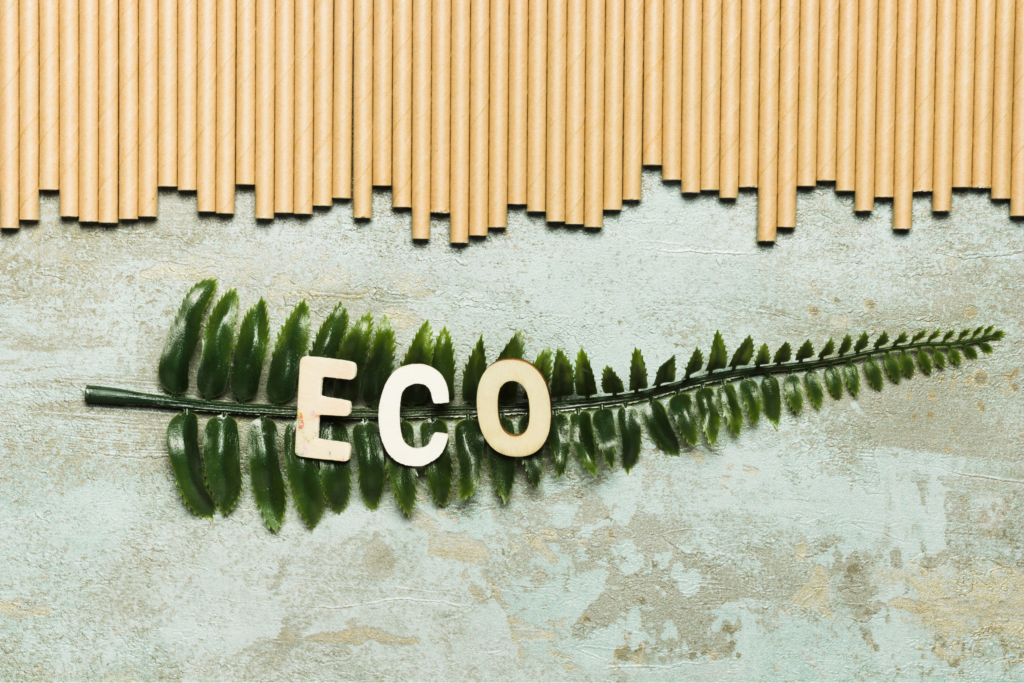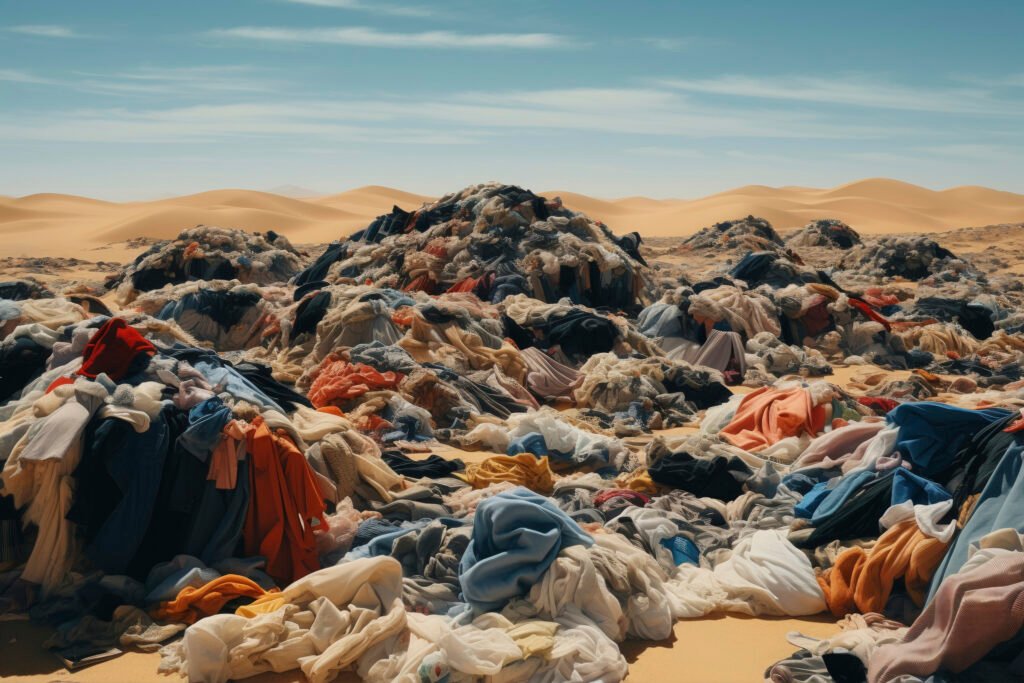
Sustainable Fashion Trends
A huge welcome, this posts meets your suitable needs for your searches about “sustainable fashion trends”,”sustainable fashion facts”,What are the 7 Rs of sustainable fashion?
Sustainable Fashion Trends: Paving the Future of Ethical Style
As environmental and ethical awareness continues to skyrocket, the fashion industry is changing. In 2024, sustainability will no longer be a choice—it will be a requirement. With environmentally friendly materials and responsible production methods becoming more and more critical for designers and customers, sustainable fashion looks to the future of style and in doing so, directs the realm of clothing towards an ecologically clean course.
Sustainable fashion trends is not just a trend, but a revolution that is here to stay and transform the future of the fashion industry. In 2024, with increasing climate consciousness and a rise in mindful consumers, the demand for eco-friendly and ethical fashion has reached unprecedented heights. Designers and brands are adopting new-age materials, circular approaches, clean supply chains and open-source innovations to become more sustainable. Right from upcycled textiles to zero-waste patterns, this new face of fashion in 2024 believes in creating sustainable style as compassionate as its wearer. So, before you upgrade your wardrobe this year, take a look at some of the top sustainable fashion trends 2024.
What is sustainable fashion?

Fashion designed for sustainability means garments and ornamentation produced in eco-friendly ways that mitigate environmental degradation while promoting ethical conduct. It involves employing environmentally friendly substances, minimizing waste production as well as ensuring just working situations along the entire supply chain. The objective of sustainable fashion is to balance between trendy fashion/appeal on one hand and responsibility on the other; it prioritizes durable, high-quality items instead of fleeting fast fashion.
Sustainable fashion trends are the term used for clothes and accessories that aim to reduce their impact on the environment while ensuring morality. These include using materials that are friendly to the environment, reducing wastage as well as making sure there is equity among those who produce them up to where they are sold. The focus here is not just looking good but on enjoying style responsibly by emphasizing on quality and durability rather than disposable fashion in a fast way. Adoption of sustainable practices by this industry seeks protection of natural resources, pollution reduction and promotion of more conscious ethical consumerism.
- Eco-friendly materials: Using organic or recycled materials that require fewer resources and chemicals during production.
- Ethical labor practices: Ensuring that workers are paid fair wages and work in safe, healthy conditions.
- Circular fashion: Extending the lifecycle of products by promoting second-hand, upcycled, or repairable garments.
What are fashion trends 2024?
Fashion trends are the popular styles, designs, or preferences that gain attention during a certain period, shaped by cultural, social, economic, and technological influences. These trends can be seen in clothing cuts, colors, patterns, fabrics, and accessories, showcasing the changing tastes of consumers. Driven by celebrity endorsements, runway shows, street fashion, social media, and global events, fashion trends are ever-changing and fluid. They have a profound impact on the fashion industry, guiding the choices of designers, retailers, and consumers.
Fashion trends are not fixed; they often come and go, with past styles frequently returning in updated forms for modern audiences. While some trends may enjoy short-lived popularity, others persist and become timeless staples. For fashion industry professionals, recognizing and predicting trends is crucial as it influences design choices, marketing strategies, and product development. By staying on top of emerging trends and consumer behavior, fashion brands can adapt to the constantly shifting industry landscape and maintain their relevance.
As we have discussed below about the fashion facts.
Key Sustainable Fashion Trends Shaping the Industry
1.Eco-Friendly Materials

One of the most significant sustainable fashion trends is the use of eco-friendly materials. These materials are derived from renewable resources and are often biodegradable or recyclable. Some common examples include:
- Organic cotton: Grown without harmful pesticides or fertilizers, organic cotton reduces the toxic impact on the environment which suits the sustainable fashion trends.
- Hemp: A fast-growing plant that requires little water and no pesticides, hemp is a sustainable alternative to traditional textiles.
- Tencel: Made from wood pulp, Tencel is a biodegradable fiber that uses less water and energy during production than conventional fabrics.
- Recycled polyester: By repurposing plastic waste, such as bottles, recycled polyester reduces the demand for virgin materials and helps mitigate plastic pollution.
Using these materials reduces the fashion industry is carbon footprint and valuable resources are preserved.
2. The Slow Fashion Movement

As a direct reaction to the environmentally detrimental habits of fast fashion, the sluggish wear trend has begun. It emphasizes on quality and longevity of clothes at the expense of quantity in order to curb purchases. The core elements of the slow fashion movement comprise:
- Gossamer patterns: Clothes are conceived to be adaptable and unchanging, so that they never go out of fashion.
- Powerfulness: Outfits are created from heavy-duty stuff and delicately stitched, enabling them to sustain recurrent ruptures and frictions.
- Do-it-yourself culture: In this regard, buyers are advised to either make alterations or recycle their wardrobe hence prolonging its life.
This trend has gained traction as more consumers seek to invest in durable, ethically-made pieces that minimize waste.
3. Ethical Labor Practices

Another significant trend in sustainable fashion trends is the emergence of ethical labor practices. Nowadays, companies are moving towards the direction of transparent supply chains by dropping exploitative labor practices. They make sure that:
- Fair wages: Workers are paid fair wages that meet or exceed local living wage standards.
- Safe working conditions: Brands provide safe, healthy environments for workers, free from hazards and unsafe practices.
- Supply chain transparency: Brands share detailed information about their production processes, materials sourcing, and factory conditions.
Consumers are increasingly demanding brands to uphold these ethical standards, creating a shift towards more responsible fashion production.
4. Circular Fashion and Upcycling

A rising trend in fashion is called “circular fashion,” which aims to reduce waste by extending the wearable life of garments. This can be accomplished by using techniques like:
- Clothing swaps: It is when consumers swap clothes with companions or people from the neighborhood to ensure that they do not wear the same things twice.
- Thrift shopping: By purchasing used fashion, it decreases the need for new ones and keeps textile waste from ending up in landfills.
- Upcycling: It entails changing the old and thrown away clothes into new stylish ones. This leads to little or no consumption of fresh resources and makes one-of-a-kind pieces of clothing.
Why is sustainable fashion important?
The fashion industry does pose a threat to the environment. Why is sustainable fashion important? Whether it be the amount of wastes generated, the pollution due to industrial processes, or the use of cheap non-biodegradable materials, this business is one of the most destructive in the world and is responsible for twenty percent of all water pollution of industries across the globe, only after the oil industry.
Most people fail to realize that most of the materials used in makings clothes, consists of synthetic fibrous polymers, which can lead to unfortunate effects of micro plastics.
Revolution in the textile industry is the need of the hour on account of the use of many toxic substances in textile manufacturing processes around the globe, an aspect that endangers the lives of workers and the environment.
There has to be this pace of transformation by way of sustainable fashion.
Sustainable fashion facts
The fashion industry's environmental impact is frequently brought to light as the climate crisis worsens and customers grow more conscious of environmental issues.
Even with some concerning data, there is still hope for sustainable fashion facts in the future. Here is a concise overview of all the information you need to know about sustainable fashion to get you started.
1.Waste

- Every year, 92 million tonnes of textile waste end up in landfills.
That is the same as one truckload every two seconds.
- 50% of apparel bought in the UK is never worn.
- 80% of clothing is disposed of in landfills.
- Merely 1% of garbage is repurposed into fresh clothing
2.Chemical pollution

Many chemicals must be processed from raw materials, and those chemicals must have a somewhere to go. Sadly, this typically has a negative impact on communities, the environment, and natural resources.
- The apparel industry accounts for twenty percent of wastewater.
- 43 million tonnes of chemicals are used annually to dye clothing.
- Ten to twenty percent of pesticide use is attributable to fashion.
- Each year, 500,000 tons of plastic microfibres—or 50 billion plastic bottles—end up in the world’s oceans.
- A kilogram of cotton requires 20,000 liters of water to create.
3.Carbon footprint
This point better suits the “Sustainable fashion facts”. Since the levels of carbon emissions are alarming everywhere, the attention is focused on the industries and companies that are the most affected and in some cases, the consumers and authorities are blaming them.
- The influence that the garment industry has on the environment surpasses even that of the tonnage of air transport and shipping combined.
- The fashion industry is the second most important source of greenhouse gas emissions, as it is responsible for 10% of the world’s pollution.
- The production of a single white cotton t-shirt incurs an environmental emission which is the same as driving a car for 35 miles.
4.Circular fashion
Although the effects of circular fashion have not been seen and felt entirely, several positive sustainable fashion facts correspond with a model that shows some signs of optimism.
- A 560 billion USD economic potential might be created by circular business models for the fashion industry.
- According to the Ellen McArthur Foundation, by 2030, circular models could account for 23% of the world’s fashion market, up from their current 3.5% share.
FAQs
What is the future of sustainable fashion?
The creation of conventional fashion is related with increased water use, greenhouse gas emissions, and pollution. Sustainable clothing helps reduce these factors. We can save natural resources for future generations, lessen our carbon footprint, and save ecosystems by making sustainable decisions.
What are some sustainable fashion ideas for apparel retailers?
Retailers can adopt circular economy strategies like recycling and upcycling, support moral and open supplier chains, curate slow fashion collections and on-demand manufacturing methods, and use cutting-edge sustainable materials by implementing sustainable fashion ideas.
How to make the clothing industry more sustainable?
What are the trends in sustainable fashion?
What are the 7 Rs of sustainable fashion?

Rethink
In this framework, the upmost and most important stage is to re-evaluate the amount of fashion consumed. Take a closer look at the patterns and routines that you may practice when it comes to fashion consumption. Is it really so necessary to be ‘on’ the latest and solely the latest social media craze of fast palette fashions that are already dotted all over the television? Or do you find yourself ‘window shopping’ and waiting for your favourite s store to announce a sale on her latest collection? Or do you find yourself buying clothing so as not to be caught wear the same outfit or repeating ‘fashion statements’?
If you do, you are not the onlyone. Three Gen Z consumers were prominently featured in a New York Times article from 2019, and they all expressed the common concern of not wanting to be photographed in the same piece of clothing more than once. In that respect, the piece also maintained that there are certain personalities that wear an item just once for the purpose of enhancing its potential markets.
Refuse
A change in consumption habits is the next level of the sustainable fashion pyramid: buying only what is strictly functional or ethical. For example, ‘swag’ items such as caps, T-shirts, etc. are usually provided by company or event organizers. Limited though such items are, there is always a right time and place for them, they are, more-often-than-not, cheap in production costs which mean they will hardly be put into use for long before they are binned.
So, the next time someone tries to present you with a piece of free clothing or accessory, remember to take a minute before saying yes except in cases where you really want it. This helps in decluttering your wardrobe as well as informing companies that there is a need for a shift in their marketing tactics.
Refuse
After the two terms “rethink” and “refuse” logically comes the first of the three fundamental R’s relative to the sustainable management of waste, “reduce.” In the statistics, averaged out of 80 to 150 billion pieces of clothing annually manufactured, it may not be possible to change that demand quickly or directly, but researchers have indicated the shift in the consumption might bear fruits across the fashion industry.
The most effective ways to reduce your fashion consumption include buying only what is needed, investing in quality apparel, and ensuring that clothes last longer so buying new ones becomes infrequent. For instance, prolonging the life of your clothes involves washing and drying them only when it is necessary and not after every wear.
Reduce
The first of the three fundamental R’s of sustainable trash management, “Reduce” can be logically sequenced after the two parts of the phrase that call to “Rethink” and “Refuse.” The annual clothing production of mankind ranges from 80 up to 150 billion units, thus you may not be in position to influence such figures directly and promptly, however scientists have proven that to weaken ones consumption does help the fashion industry to a certain extent.
The most helpful techniques to illuminate the problem of dressing too much include purchasing items only when necessary, investing in quality clothes and taking care of them so that one does not have to purchase new ones more frequently than necessary. For example, when you simply do not wear the clothing for a period of time it is best to wash it only if absolutely necessary instead of doing so every wearing, and consequently drying them.
Reuse
We’ve reached a stage where it is alright to wear the same set of clothes on a daily basis. These clothes should be worn, as they are made for that purpose! Unfortunately, most of the garments will get worn on average seven to ten times and afterwards be given to charity or thrown out. The #30wearschallenge argues that an item should be worn at least thirty times before one can claim that it has reached an environmental sustainability ‘break even’ point.
Granted most clothing may and should last longer than that, there also are some valid reasons for disposing of a garment that would by recycled such as becoming a different size or style. This is where knowing how to sell and donate comes in handy. To ensure that people still make use of those items, carrying around unwanted clothes may be donated, sold, or rather given out as presents.
Repair
The longevity of garments, especially those which are cheap, is yet another of the considered precepts of sustainable fashion. Loving a garment does not necessarily mean that it must be thrown away the moment there is a tear on the sweater or even the loss of a button on a pair of trousers. Instead, a favorite article of clothing can usually be saved with a quick mend.
While it is definitely a mother’s duty, and not everyone thinks it is necessary for mending clothes, simple sewing will do the trick. There are many such repair methods; this guide introduces some of them. In those rare cases where you do not have a friend with basic sewing skills, you may place your clothing in the hands of a fortunate professional seamstress or tailor.
Do remember that no matter how it may appear?
Recycle
Just like the three Rs, recycling is not the first place of the sustainable fashion hierarchy. Yes, recycling helps save natural resources, but it is not always the best solution especially when it comes to textile wastes.
The common perception is that textile recycling is a closed loop. However, textiles are made of multiple components which makes them more difficult to turn back into useful yarns than more readily recyclable materials such as cardboard. In actual fact, most textiles are recycled into stuffing, insulation, carpets and rags.
Even though textiles occupy precious areas and produce greenhouse gases when disposed of in landfills, still, it is better to recycle them. Therefore, if you have any old, torn, stained, or used.
Rot
Finally, were you aware that specific fabrics can decompose under Some textiles are compostable conditions? You can compost at home those clothes made out of organic materials only and for example, choose to wear hemp or cotton and linen instead. Just make sure that all fasteners, metallic parts, and rubber bands are removed prior to use. After which, simply cut up the material into small pieces of fabric and add it to your composting process. Depending on the fabric and according to your composting system, the material may take up to six months to decompose completely.
This is because most municipal composting systems consider that fabrics tend to have a great many constituents which may not be bio-degradable.
